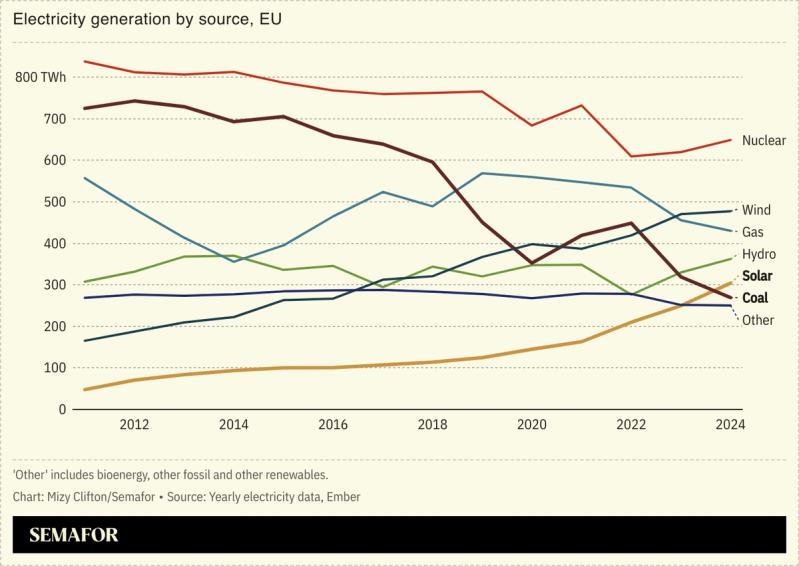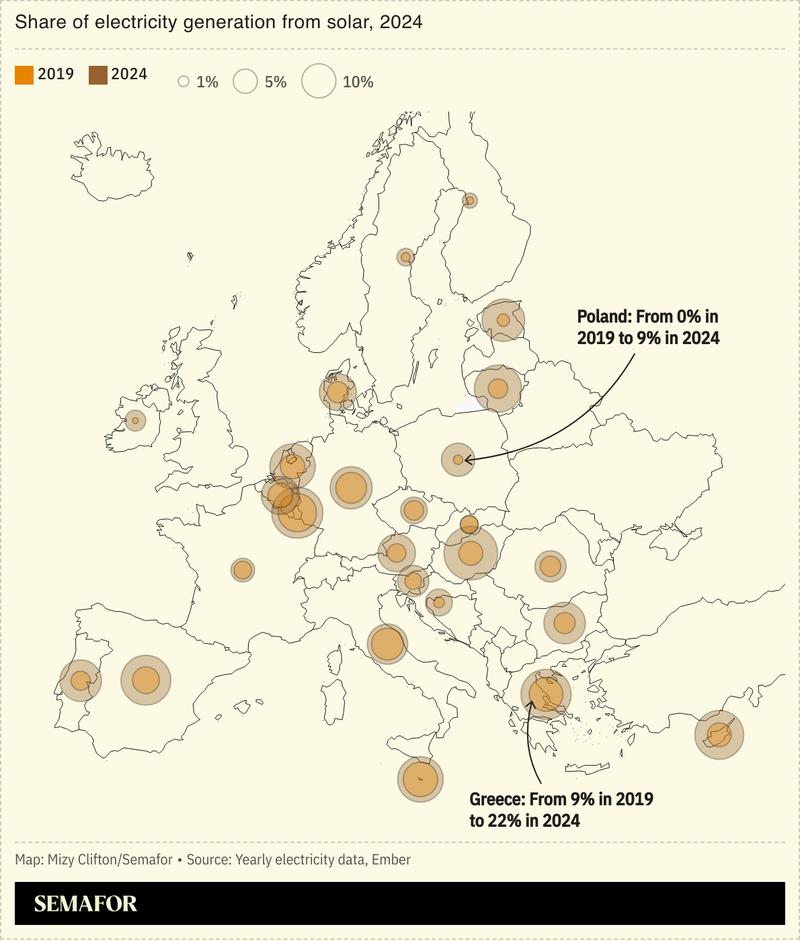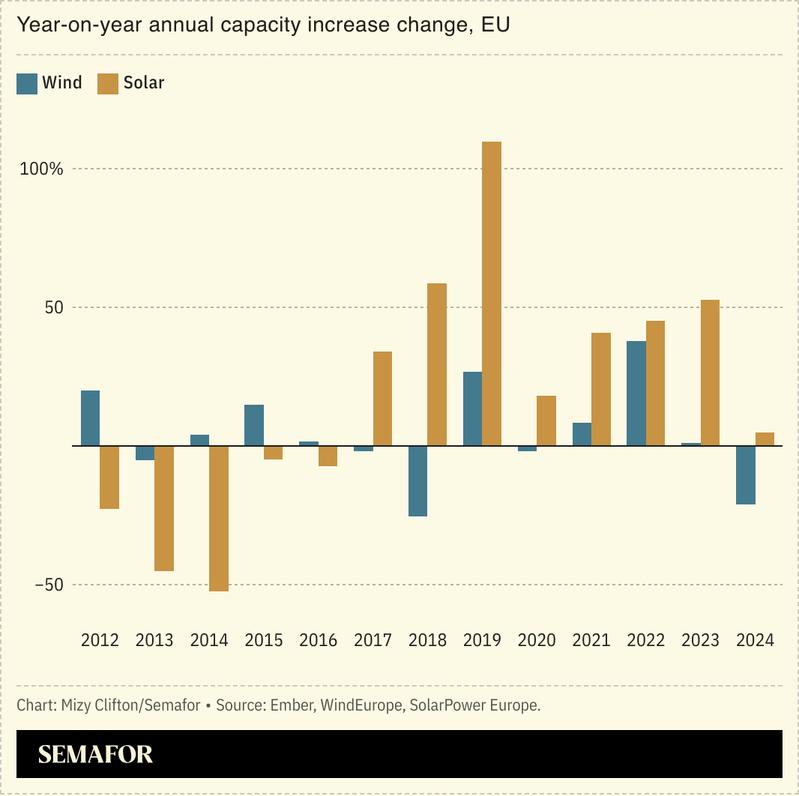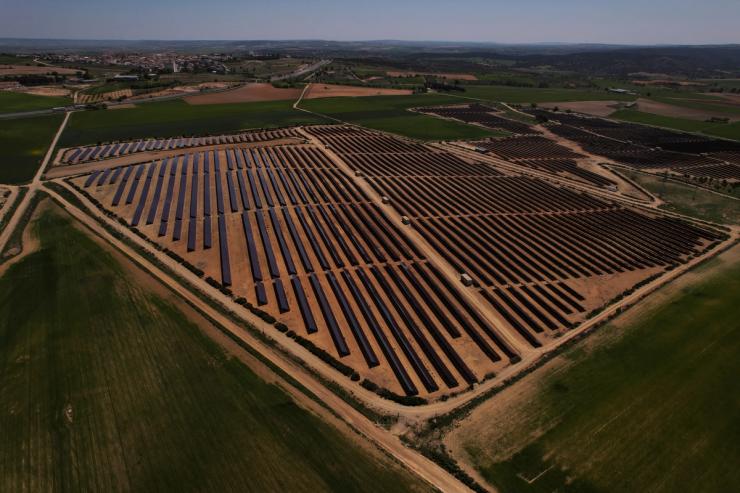The News
Solar power has overtaken coal in the European Union for the first time, according to research released Thursday.
The surge in solar — now the EU’s fastest growing power source, responsible for 11% of its supply — came as capacity additions hit a record last year. Combined with a regional recovery of hydropower, renewables now account for nearly half (47%) of the EU’s total electricity generation, another record high, a report by the power-focused think tank Ember found.
The benefits associated with the ongoing decline of coal and gas go beyond emissions reductions, the report noted, saving the bloc €59 billion ($61.4 billion) in fossil fuel imports since 2019.
Wind, however, has endured a “challenging few years” amid high inflation and supply chain shocks, Ember warned: Capacity additions aren’t keeping pace with the acceleration of solar, partly due to high upfront costs and long project lead times.

SIGNALS
EU’s solar dependence on China is ‘fundamentally different’ to its reliance on Russian gas
Around 95% of European solar panels come from China, to the detriment of the continent’s few domestic manufacturers, leaving the bloc “stuck between a rock and a hard place,” Reuters reported: The EU has agreed to a non-binding 40% self-sufficiency target for solar panels and other key technologies by 2030, but there is “no strong economic justification” for an import substitution approach, the Brussels-based think tank Bruegel argued. Besides, Europe’s reliance on Russia for fossil fuels is “fundamentally different” to its reliance on China for clean technologies, Chris Rosslowe, a senior energy analyst at Ember told Semafor: Once the latter has been imported, “it’s in Europe, and it’s going to create energy for 25, 30 years.”

EU attempts to wean itself off Russian gas may be costly
The EU’s efforts to diversify away from Russian gas have increased its reliance on liquefied natural gas (LNG) and by extension, exposure to the inherent volatility and price shocks of the global LNG market. That reliance is “only set to deepen” given the recent expiry of a transit deal between Russia and Ukraine, Ember noted, with the closure felt most acutely by countries like Austria, Hungary, and Slovakia, which previously benefited from cheaper prices thanks to no middlemen, Politico reported. The EU at large will face “ripple effects,” too, a Brookings Institution energy security expert told Politico: There will be less room for error if supply issues arise.
Wind outlook for next five years looks promising
To hit the target of 440 GW total installed wind capacity by 2030, the rate of additions between now and 2030 needs to double, Ember’s report said. The technology’s growth will likely withstand domestic politicking, such as Germany’s far-right Alternative für Deutschland party making NIMBY-like opposition a central plank of its platform, Chris Rosslowe, senior energy analyst at Ember, told Semafor: Germany has made more progress than the rest of the EU combined on the permitting of new wind projects, up 60% compared to 2024. But “there’s obviously more uncertainty after [2030], which is where bigger political swings could have an impact,” Rosslowe noted.




